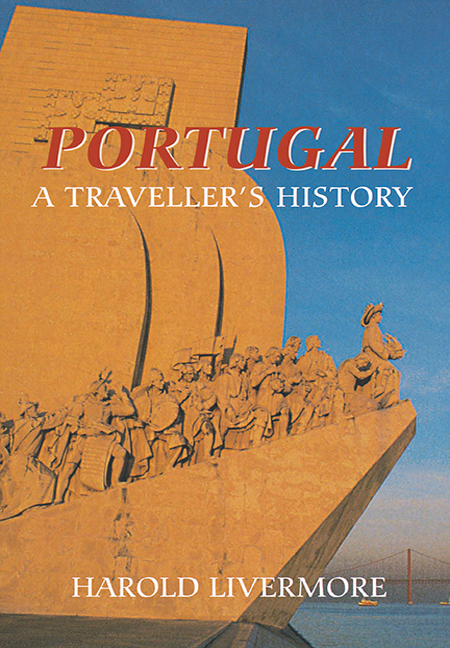Book contents
- Frontmatter
- Contents
- List of Illustrations
- Foreword
- 1 Introduction
- 2 Portugal in History
- 3 Before Portugal
- 4 Islamic Portugal
- 5 Architecture
- 6 Painting
- 7 Music
- 8 Birds
- 9 Fishing
- 10 Portuguese Wines
- 11 Lisbon
- 12 North from Lisbon
- 13 Oporto
- 14 North of Oporto
- 15 Interior Portugal
- 16 Alentejo
- 17 Algarve
- Afterword
- Index
- Frontmatter
- Contents
- List of Illustrations
- Foreword
- 1 Introduction
- 2 Portugal in History
- 3 Before Portugal
- 4 Islamic Portugal
- 5 Architecture
- 6 Painting
- 7 Music
- 8 Birds
- 9 Fishing
- 10 Portuguese Wines
- 11 Lisbon
- 12 North from Lisbon
- 13 Oporto
- 14 North of Oporto
- 15 Interior Portugal
- 16 Alentejo
- 17 Algarve
- Afterword
- Index
Summary
Portugal is a land, its people, and their language. It is not one of the larger European states, comprising about a fifth of the Iberian Peninsula. Its population is about ten million, comparable with those of Scotland, Wales and Northern Ireland combined, Norway and Sweden combined, Belgium, or Greece. Yet its language is more widely spoken than French, German, or any other European tongue, except English and Spanish. This is due largely to the vastness and growth of Brazil, which exceeds in population any state of Europe, even Britain and France combined. Portuguese has also been implanted in a large part of Africa south of the Sahara, and exists in places in Asia as far as Macau in China, and in Timor in Oceania. Its most remarkable feature has been its capacity to expand and endure. Both Portuguese and Castilian were once the provincial Latin of the late Roman army spoken only in small areas.
Though the language is as Latin as Italian and much more so than French, the word Portugal – like Castile – would have meant nothing to an ancient Roman. He would have heard of the Further Province or of Lusitania, but the political divisions of antiquity were effaced by the Muslim expansion into Europe of ad 711. Portugal emerged, as did the other states of the Peninsula, from the Christian Reconquest. The name is first used in the ninth century, when it applied to the area of Oporto. Portugal reached its present limits in about 1250, since when its frontiers have scarcely altered.
The expansion of Europe began when the Portuguese conquered the North African port of Ceuta in 1415. Soon after, Portuguese navigators annexed the Atlantic Isles of the Madeiras and the Azores. Both groups had been uninhabited since the formation of the world, and are therefore properly Portuguese. A distinction is made between ‘continental Portugal’ and the ‘adjacent isles’. Madeira is 600 miles south of Lisbon and the Azores 800 miles to its west. In the fifteenth century, when Vasco de Gama took two years to find the sea-route to India and to return, and in 1519 when Fernão de Magalhães (Magellan) set out on the first circumnavigation of the globe, these distances did not seem enormous. Nowadays, the islands are reached from Lisbon by air in two or three hours.
- Type
- Chapter
- Information
- Portugal: A Traveller's History , pp. 1 - 8Publisher: Boydell & BrewerPrint publication year: 2004



